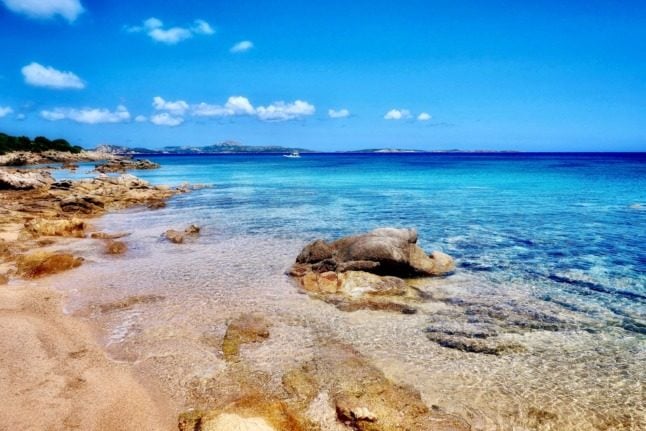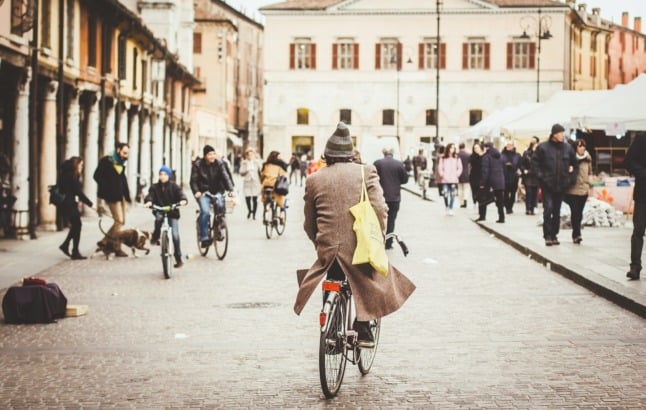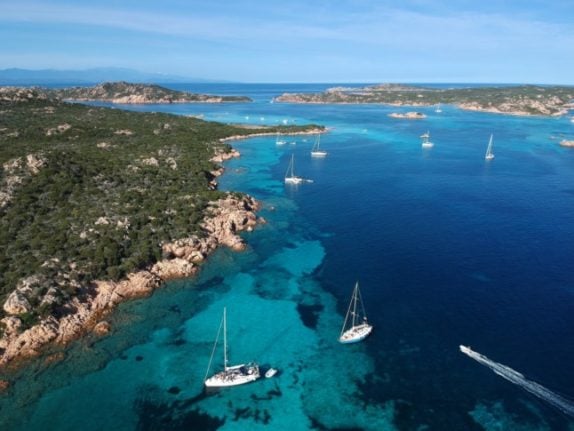Just a handful of cities and destinations in Italy hog the limelight for international travel, including Rome, Venice, and the Cinque Terre – and while they’re all worthy of their reputations, many visitors might decide this is the year to discover a lesser-known part of the country.
That’s not just because avoiding overcrowding is better both for tourists and for monuments, but this summer for the second year in a row there’s the added concern about public health.
While Italy’s coronavirus situation continues to improve and most restrictions have now been eased, the risk has not disappeared completely, and Italy currently only has around 20 percent of the population fully vaccinated.
READ ALSO: What will Italy’s coronavirus rules be for summer 2021?
Italy plans to welcome back more international visitors this year than last, including those from certain non-EU countries with high vaccination rates, including the US and Canada.
Italy’s biggest tourist hotspots are gearing up for the summer season, with cities scheduling events and seaside towns checking that their beaches are in top shape.
With travel still complex, the majority of Italian residents also plan to spend the country’s long summer holidays enjoying sights closer to home, with only 20 percent planning to go abroad this year – most of them to summer hotspots in Sicily or Puglia.
MAP: Which parts of Italy will be Covid-19 ‘white zones’ in June?
To give you some inspiration, here’s our pick of alternatives to the most famous destinations. Though these feature less in the guidebooks, they are no less worthy of a visit and could also be a quieter, safer bet, based on their population and health data.
Oristano, Sardinia
This coastal town in tourist favourite Sardinia is a secret wonder. It currently has some of the country’s most favourable health data, according to the latest data analysis from Italian newspaper Il Sole 24 Ore‘s monitoring site Lab 24.
The weekly new cases per inhabitants stands at just 10 per 100,000. That’s a considerable drop on the national figure of 47, according to the latest national health data.
Just 3.3 percent of the local population is infected compared to the national figure of 6.9 percent, making this a sensible choice to avoid the hordes of tourists.
In fact, things are looking up in Sardinia as a whole with an average Rt number of 0.61 – that’s the reproduction rate used to calculate how fast the virus is spreading. It’s 0.72 nationally.
READ ALSO: What is Italy’s ‘green pass’ for travel and how do you get it?
Located in the central-western part of the island, Oristano is the “gateway to an infinite number of natural beauties”, according to Sardinia’s tourism board. It is also the “noble soul of the island”, where nature meets historical monuments.
It’s also got a modest population of just over 31,600 according to statistics body Istat, meaning it could make a great getaway place to unwind and relax after months of lockdown-induced stress.

Sardinia’s beaches and sea are jaw-dropping. Photo: Massimo Virgilio on Unsplash
Sondrio, Lombardy
You might think that the Lombardy region wouldn’t feature on this list, as the region has been the worst hit in Italy throughout the pandemic and, while improving, its health data isn’t the most encouraging. Compared to the rest of the country, this region has a higher Rt, currently at 0.78.
However, just as with rules and restrictions, the situation differs from town to town and by province too.
Sondrio is showing optimistic figures, with an incident rate of 47 per 100,000 inhabitants. Although there are neighbouring areas also with promising numbers, such as the charming Lecco on Lake Como, Sondrio has less than half its population, at just over 21,600.
READ ALSO: Indoor dining and later curfew: Italy’s new timetable for easing Covid-19 restrictions
Even though it may be lesser known, Sondrio won Alpine Town of the Year award in 2007.
It boasts mountains, lakes and is a perfect holiday for those who want to get active through hiking, climbing and canoeing for example.
There are also events on throughout the year, such as a Dante exhibition and live shows.
Ferrara, Emilia Romagna
If you’re looking for a city break off the tourist track, Ferrara is beautiful, historic city in Emilia Romagna – and again, it’s got some good-looking health figures to back it up.
With a low incidence of 11, it’s a destination faring well compared to the national statistic. On a regional level it’s performing too, with the infection rate standing at 6.6 percent compared to Emilia Romagna’s 8.6 percent overall.
It’s got a comparatively huge population to our hidden hotspots so far, at just over 132,000 inhabitants.
But compare that to the likes of Florence (around 382,200) or Rome (2,873,000), and it becomes clear this is a small city with far less chance of getting squished during your sightseeing in times of Covid.

Ferrara is known for its Renaissance buildings, its beautiful moated castle and the famous city walls, where city meets countryside. There’s also an impressive diamond-bricked building called the Diamanti Palace, home to the National Picture Gallery.
It’s a bicycle-friendly city too and is easily enjoyed on two wheels through its pedestrianised centre.
READ ALSO:
- TRAVEL: Italy reports surge in bookings for ‘smart working’ summer holidays
- How Italy’s tourist hotspots are preparing for summer 2021
- Can Americans travel to Italy for tourism this summer?
Gorizia, Friuli-Venezia-Giuli
Another alternative to the beach holiday is Gorizia in Friuli-Venezia-Giulia, one of the three regions to have been downgraded to the lowest-risk ‘white zone’ classification this week.
It has an incidence rate of 33 and a population of almost 34,500 making it a good spot for safe tourism.
It’s located at the foot of the Julian Alps, bordering Slovenia, and is known for its tourism and industry. This border town is packed full of history and nature, described as the “most beautiful open door to Italy”, according to the painter Max Klinger.
Gorizia’s Latin, Slavic and Germanic influences can be seen in its streets and squares, stretching out along the Isonzo river and is flanked by glorious vineyards.
Italy’s small islands
If being active isn’t what you’re after and you’re longing to just lie on a beach and dip your toes into rejuvenating waters, then some of Italy’s ‘Covid-free’ islands might be just the ticket.
Procida, an island in the Bay of Naples, became the first island to fully vaccinate its residents in May.
It has just under 10,500 inhabitants and after its successful vaccination rollout, is an alluring holiday destination for those hoping to escape and avoid concentrations of tourism.

Mayors of Italy’s dozens of small islands, which altogether have a permanent population of a few hundred thousand but can host several times that in summer, pushed for blanket vaccination before Italy invited tourists back.
Their often remote location can make it difficult for residents to access the healthcare they need, so it was a move for those permanently living there, especially for their more fragile citizens.
Mass vaccinations are also underway on Procida’s neighbouring islands of Capri and Ischia, while Sicily’s vaccination rollout is also speeding up.
The Pontine islands off the coast of Lazio, the Tremiti in Puglia, Capraia and Giglio in Tuscany, and the Maddalena archipelago off Sardinia are also currently working on vaccinating all their residents in time for summer.
Find all our latest news updates on travel to, from and within Italy here.



 Please whitelist us to continue reading.
Please whitelist us to continue reading.
Member comments